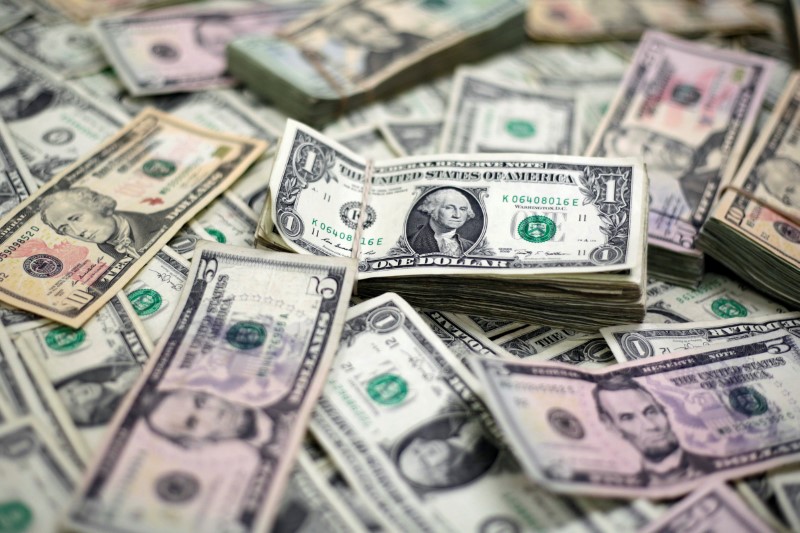By Saikat Chatterjee
LONDON (Reuters) - The dollar edged higher on Friday, heading for a second week of gains, as investors cut some bets against the currency before monthly U.S. payrolls data that may signal price pressures are growing in the world's biggest economy.
The escalating trade conflict between the United States and China hasn't affected currency markets - most pairs remain in ranges and a gauge of currency market volatility was near 2018 lows.
In the latest salvo, Beijing warned it would fight back "at any cost" if the United States stuck to its protectionist stance, after President Donald Trump threatened to impose an extra $100 billion in tariffs.
"Any escalation in the trade war rhetoric would be more negative for China than the U.S., given the former's relative dependency on trade, but for now, the markets are focused on the payrolls data," said Richard Falkenhall, a senior currency strategist at SEB in Stockholm.
The dollar edged 0.1 percent higher against a basket of currencies (DXY) at 90.54 on Friday. On a weekly basis, it was up more than half a percent and on track for its biggest weekly rise in six weeks.
Mainland China markets were shut for a holiday. The offshore yuan was trading more than 0.4 percent weaker against the dollar
Monthly U.S. payrolls numbers is the main event, with currency markets focused on the annual increase in U.S. average earnings, especially after a strong reading from the ADP National Employment Report on Wednesday.
Forecasts are for a 2.7 annual rise in wages in March after a 2.6 percent increase in February. Anything higher would signal rising wage pressures, which may lead markets to bet on more U.S. rate increases than the three now expected.
"The dollar's resilience may be a sign that short-term market positioning is tilted toward being short the dollar and long the yen, said Stephen Innes, head of trading in Asia-Pacific for Oanda in Singapore.
"My feeling is everybody owns yen and the problem is they need some new story lines ... We've got an over-subscribed trade," Innes said, referring to bullish bets on the yen.
Market participants cautioned, though, that the yen could gain further if U.S. stock markets come under pressure on Friday.
U.S. S&P 500 E-mini futures (ESc1) were down as much as 0.8 percent, pointing to a lower start for Wall Street. European stock futures were trading as much as 0.2 to 0.7 percent lower.

The euro held steady at $1.2231 (EUR=EBS), near a one-month low of $1.22185 set on Thursday.